
Filter News
Area of Research
- (-) Energy Science (72)
- (-) National Security (31)
- (-) Nuclear Science and Technology (10)
- (-) Supercomputing (58)
- Advanced Manufacturing (4)
- Biology and Environment (16)
- Computational Biology (1)
- Computer Science (4)
- Electricity and Smart Grid (1)
- Functional Materials for Energy (2)
- Fusion and Fission (10)
- Fusion Energy (1)
- Materials (63)
- Materials for Computing (8)
- Neutron Science (100)
- Quantum information Science (1)
News Type
News Topics
- (-) Advanced Reactors (12)
- (-) Artificial Intelligence (48)
- (-) Cybersecurity (27)
- (-) Energy Storage (49)
- (-) Neutron Science (22)
- 3-D Printing/Advanced Manufacturing (59)
- Big Data (23)
- Bioenergy (29)
- Biology (19)
- Biomedical (18)
- Biotechnology (6)
- Buildings (23)
- Chemical Sciences (14)
- Clean Water (4)
- Composites (8)
- Computer Science (93)
- Coronavirus (21)
- Critical Materials (4)
- Environment (54)
- Exascale Computing (26)
- Fossil Energy (2)
- Frontier (31)
- Fusion (9)
- Grid (28)
- High-Performance Computing (43)
- Hydropower (1)
- Isotopes (6)
- Machine Learning (25)
- Materials (33)
- Materials Science (33)
- Mathematics (3)
- Mercury (2)
- Microelectronics (1)
- Microscopy (12)
- Molten Salt (2)
- Nanotechnology (13)
- National Security (37)
- Nuclear Energy (34)
- Partnerships (16)
- Physics (11)
- Polymers (6)
- Quantum Computing (16)
- Quantum Science (24)
- Security (17)
- Simulation (16)
- Software (1)
- Space Exploration (6)
- Summit (38)
- Transportation (41)
Media Contacts
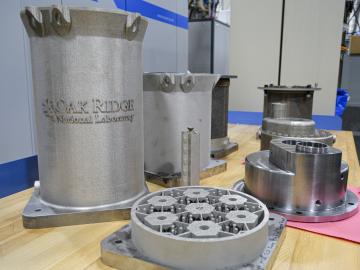
Researchers at the Department of Energy’s Oak Ridge National Laboratory are refining their design of a 3D-printed nuclear reactor core, scaling up the additive manufacturing process necessary to build it, and developing methods
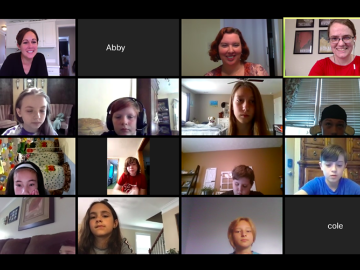
With Tennessee schools online for the rest of the school year, researchers at ORNL are making remote learning more engaging by “Zooming” into virtual classrooms to tell students about their science and their work at a national laboratory.

Suman Debnath, a researcher at ORNL, has been elevated to the grade of senior member of the Institute of Electrical and Electronics Engineers (IEEE).
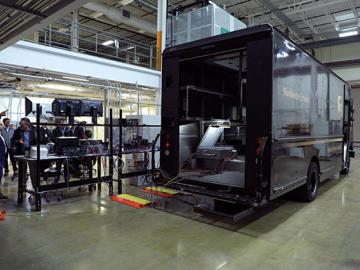
Researchers at the Department of Energy’s Oak Ridge National Laboratory (ORNL) in late February demonstrated a 20-kilowatt bi-directional wireless charging system installed on a UPS medium-duty, plug-in hybrid electric delivery truck.

In the race to identify solutions to the COVID-19 pandemic, researchers at the Department of Energy’s Oak Ridge National Laboratory are joining the fight by applying expertise in computational science, advanced manufacturing, data science and neutron science.
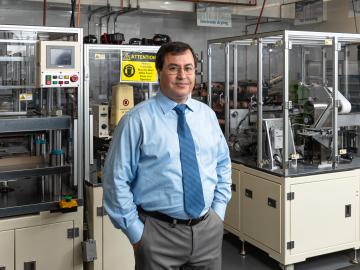
Ilias Belharouak is leading ORNL’s research efforts in investigating new materials for solid-state batteries, which can double the charging capacity of lithium-ion batteries, commonly used today for electronic devices such as cell phones.
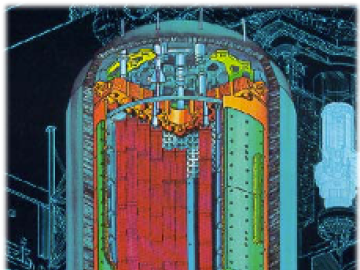
A software package, 10 years in the making, that can predict the behavior of nuclear reactors’ cores with stunning accuracy has been licensed commercially for the first time.
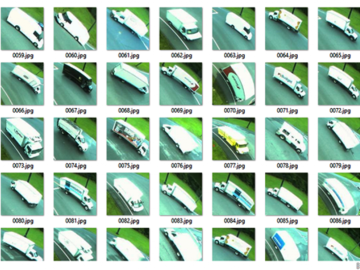
Each year, approximately 6 billion gallons of fuel are wasted as vehicles wait at stop lights or sit in dense traffic with engines idling, according to US Department of Energy estimates.

As the second-leading cause of death in the United States, cancer is a public health crisis that afflicts nearly one in two people during their lifetime.

Energy storage startup SPARKZ Inc. has exclusively licensed five battery technologies from the Department of Energy’s Oak Ridge National Laboratory designed to eliminate cobalt metal in lithium-ion batteries. The advancement is aimed at accelerating the production of electric vehicles and energy storage solutions for the power grid.


